Punitive tariffs against Chinese automakers could slow European BEV adoption and boost platinum demand
14 September 2023
The potential for punitive tariffs to be applied to Chinese automakers in reaction to alleged state subsidies that allow them to undercut European rivals, could slow the pace of electrification in the European car market. We estimate that from 2025f, each 1% change in European BEV adoption equates to ~11 koz of automotive platinum demand annually. Europe’s BEV adoption lagging China’s rate by three-years instead of two-years would result in cumulative additional platinum demand of 220 koz between 2025f to 2027f.
Europe is the leading geographic market of automotive platinum demand. Demand of 1,070 koz in 2023f constitutes 13% of total platinum demand. Our base-case anticipates European automotive platinum demand to peak in 2023f. We expect Europe to mirror China’s BEV adoption curve at a roughly two-year lag (below righthand chart), which, alongside lower diesel sales, leads to lower platinum demand. Brussels’s initiation of an anti-subsidy probe (link) into Chinese electric vehicles raises two considerations that could slow Europe’s BEV adoption curve. Firstly, it is alleged that state support for loss-making Chinese automakers allows them to undercut European automakers on price. Accordingly, Chinese automakers BEV capabilities are unlikely replicable by the Europeans on fair economic principles. Secondly, a hurdle to mass-market BEV adoption is the ~55% electrification price premium of like-for-like models with an ICE or BEV option (Fig. 6, overleaf). If low-cost Chinese imports are unable to enter the bloc without the imposition of anti-dumping tariffs, Europe’s BEV adoption may take longer to replicate that of China’s.
Automotive will constitute 40% of 2023 platinum demand
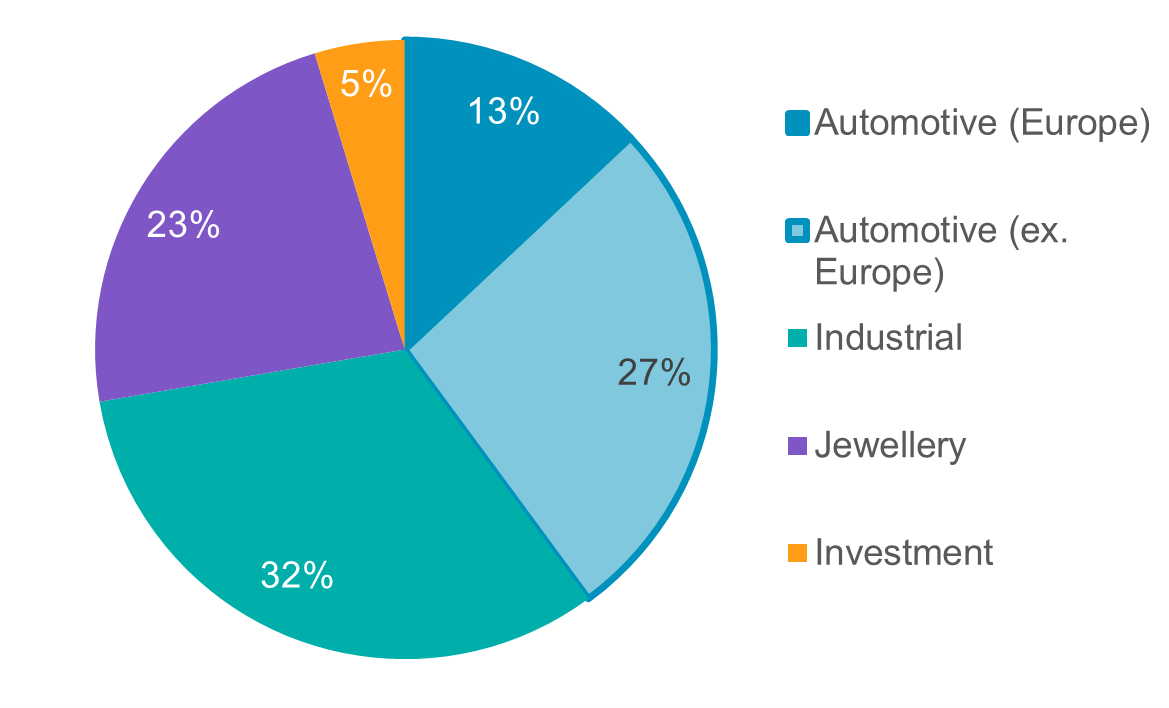
The drivetrain evolution is increasing BEV adoption
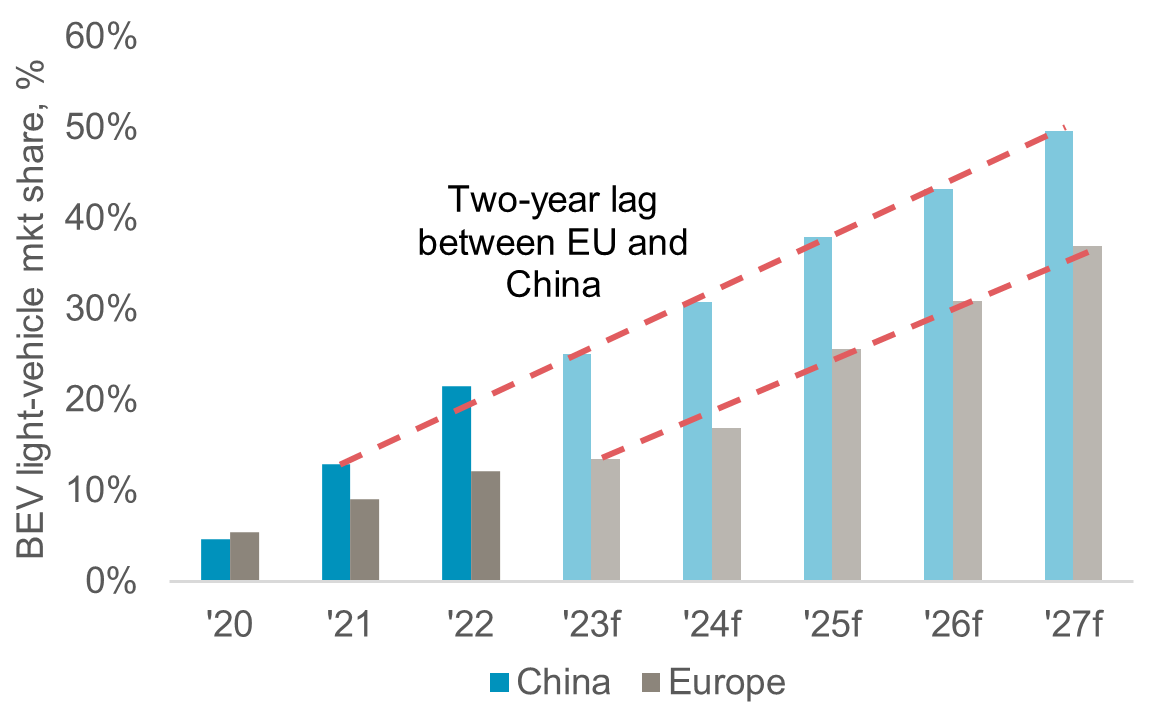
China’s automotive industry’s aggressive expansion into the EU and the associated threat to European automakers and employment, has likely triggered this probe. The market share of Chinese automakers in the EU is estimated to have tripled between 2021 and 2023 to 2.8%. Whilst small in aggregate, Chinese automakers represented a meaningful 8% of Europe’s BEV sales, per automotive data analyst Inovev. China’s swift EU incursion could offset its cooling domestic market (Fig. 3) while further entrenching China as the global market leader for BEV production (Fig. 5). Thus, the timing of regulatory probes is interesting, and speculatively suggestive of EU auto industry lobbying. Europe’s automotive sector accounts for 7% of the bloc’s GDP and employs 13 million people.
Auto lobbying has already seen the EU exempt e-fuel compliant vehicle sales from the 2035 ICE ban and is likely to delay implementation of Euro 7 emission legislation. If an anti-subsidy probe deems it necessary to apply tariffs on Chinese electric vehicles, could further lobbying efforts target a deferral to the EU’s 2035 ban on ICE vehicle sales? Deferring Europe’s 2035 ban on ICE vehicle sales would invariably slow BEV adoption and support automotive platinum demand well into the next decade.
Platinum’s attraction as an investment asset arises from:
- WPIC research indicates the platinum market entering a period of consecutive deficits from 2023.
- Platinum can be considered a proxy for investing in the growing hydrogen economy given its use in electrolysers and fuel cells.
- Platinum supply remains challenged, hampered by electricity shortages in South Africa and sanctions against Russia
- Automotive platinum demand growth should continue due principally to substitution in gasoline vehicles.
- The platinum price remains historically undervalued and significantly below both gold and palladium.
Figure 1: Europe is the largest constituent of automotive platinum demand due to its relatively high share of diesel drivetrains
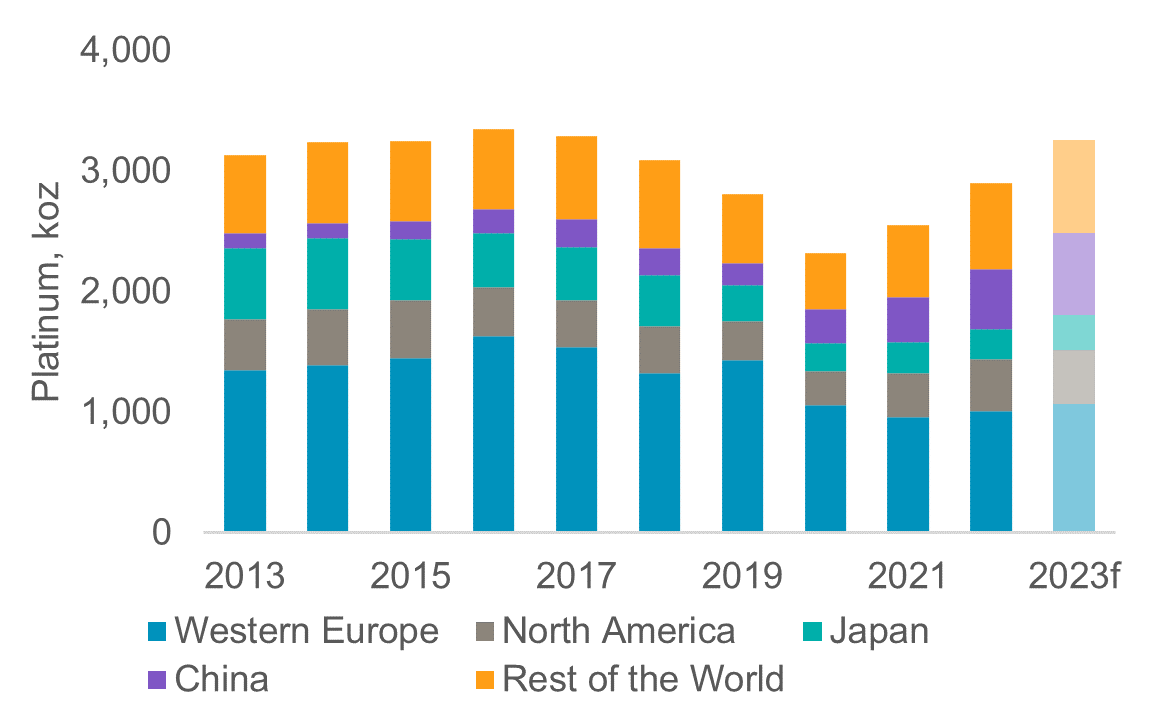
Figure 2: We expect Europe to lag Chinese BEV adoption rates by approximately two-years

Figure 3: China’s BEV penetration rate has stabilised at between 22% to 25% since Nov ’22, suggesting a weaker domestic appetite and need for higher exports
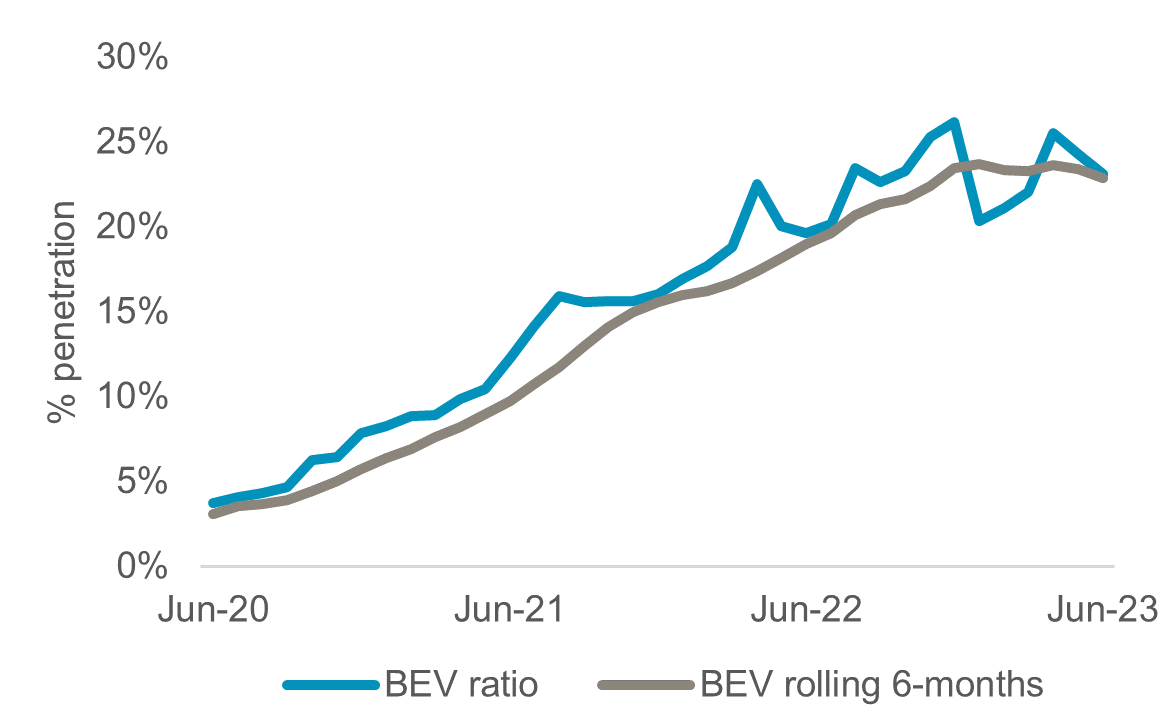
Figure 4: China’s Light vehicle production market share has increased by 8% to 32% over the past decade to 2023
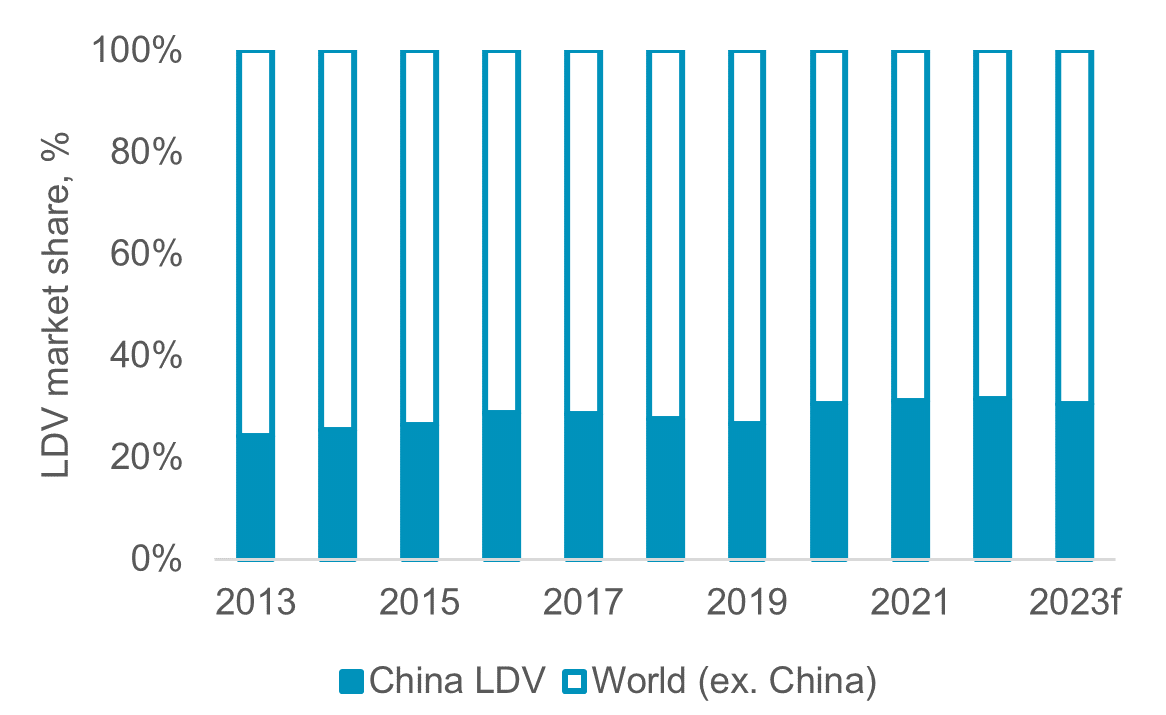
Figure 5: China dominates global BEV production, accounting for approximately three of five vehicle produced
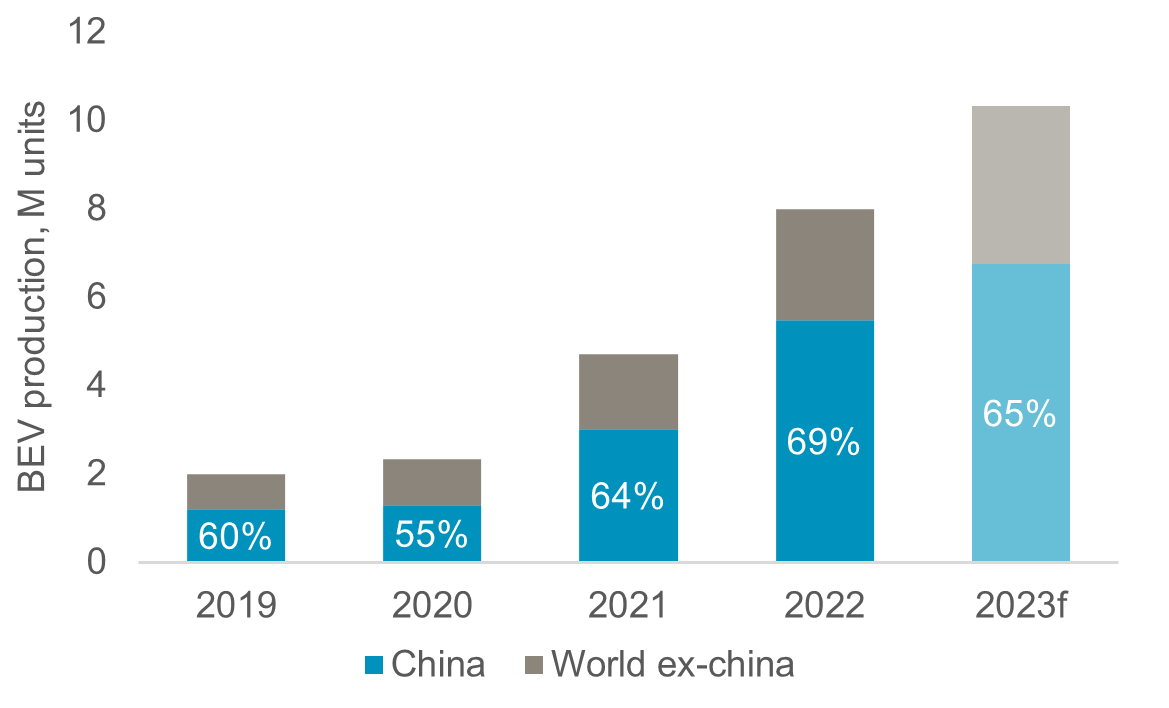
Figure 6: Electric vehicle prices continue to run well ahead of the ICE equivalent vehicles, which may inhibit mass market adoption
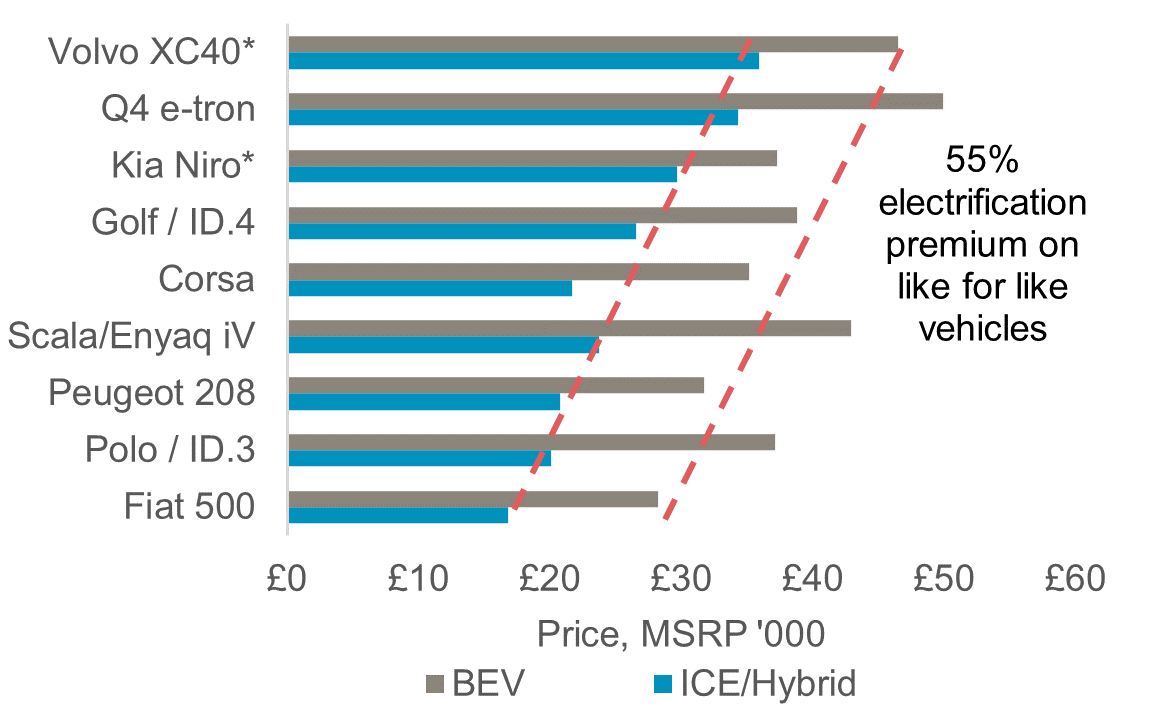
IMPORTANT NOTICE AND DISCLAIMER: This publication is general and solely for educational purposes. The publisher, The World Platinum Investment Council, has been formed by the world’s leading platinum producers to develop the market for platinum investment demand. Its mission is to stimulate investor demand for physical platinum through both actionable insights and targeted development: providing investors with the information to support informed decisions regarding platinum; working with financial institutions and market participants to develop products and channels that investors need.
This publication is not, and should not be construed to be, an offer to sell or a solicitation of an offer to buy any security. With this publication, the publisher does not intend to transmit any order for, arrange for, advise on, act as agent in relation to, or otherwise facilitate any transaction involving securities or commodities regardless of whether such are otherwise referenced in it. This publication is not intended to provide tax, legal, or investment advice and nothing in it should be construed as a recommendation to buy, sell, or hold any investment or security or to engage in any investment strategy or transaction. The publisher is not, and does not purport to be, a broker-dealer, a registered investment advisor, or otherwise registered under the laws of the United States or the United Kingdom, including under the Financial Services and Markets Act 2000 or Senior Managers and Certifications Regime or by the Financial Conduct Authority.
This publication is not, and should not be construed to be, personalized investment advice directed to or appropriate for any particular investor. Any investment should be made only after consulting a professional investment advisor. You are solely responsible for determining whether any investment, investment strategy, security or related transaction is appropriate for you based on your investment objectives, financial circumstances and risk tolerance. You should consult your business, legal, tax or accounting advisors regarding your specific business, legal or tax situation or circumstances.
The information on which this publication is based is believed to be reliable. Nevertheless, the publisher cannot guarantee the accuracy or completeness of the information. This publication contains forward-looking statements, including statements regarding expected continual growth of the industry. The publisher notes that statements contained in the publication that look forward in time, which include everything other than historical information, involve risks and uncertainties that may affect actual results. The logos, services marks and trademarks of the World Platinum Investment Council are owned exclusively by it. All other trademarks used in this publication are the property of their respective trademark holders. The publisher is not affiliated, connected, or associated with, and is not sponsored, approved, or originated by, the trademark holders unless otherwise stated. No claim is made by the publisher to any rights in any third-party trademarks
WPIC Research MiFID II Status
The World Platinum Investment Council -WPIC- has undertaken an internal and external review of its content and services for MiFID II. As a result, WPIC highlights the following to the recipients of its research services, and their Compliance/Legal departments:
WPIC research content falls clearly within the Minor Non-Monetary Benefit Category and can continue to be consumed by all asset managers free of charge. WPIC research can be freely shared across investment organisations.
- WPIC does not conduct any financial instrument execution business. WPIC does not have any market making, sales trading, trading or share dealing activity. (No possible inducement).
- WPIC content is disseminated widely and made available to all interested parties through a range of different channels, therefore qualifying as a “Minor Non-Monetary Benefit” under MiFID II (ESMA/FCA/AMF). WPIC research is made freely available through the WPIC website. WPIC does not have any permissioning requirements on research aggregation platforms.
- WPIC does not, and will not seek, any payment from consumers of our research services. WPIC makes it clear to institutional investors that it does not seek payment from them for our freely available content.
More detailed information is available on the WPIC website:
https://www.platinuminvestment.com/investment-research/mifid-ii
Contacts:
Edward Sterck, Research, [email protected]
Wade Napier, Research, [email protected]
Kaitlin Fitzpatrick-Spacey, Research, [email protected]
Brendan Clifford, Head of Institutional Distribution, [email protected]
WPIC does not provide investment advice.
Please see disclaimer for more information.
